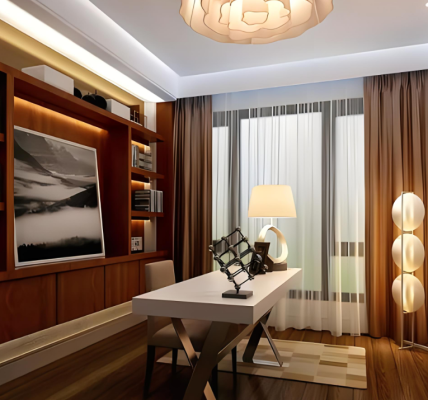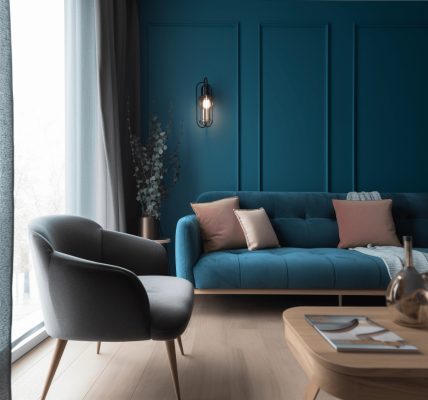A classic table lamp is a timeless and versatile lighting fixture that is designed to sit on a table or desk. It typically consists of a base, a stem, and a shade. The purpose of a classic table lamp is to provide both functional and aesthetic lighting to a space. It can be used as a task light for reading or working, or as an ambient light to create a warm and inviting atmosphere.
Having a classic table lamp in your home is important for several reasons. Firstly, it adds a touch of elegance and sophistication to any room. The classic design of these lamps never goes out of style and can enhance the overall aesthetic of your space. Secondly, they provide practical lighting solutions. Whether you need focused light for reading or a soft glow for relaxation, a classic table lamp can meet your needs. Lastly, they create a cozy and inviting ambiance. The warm glow emitted by the lamp can make any room feel more comfortable and welcoming.
The History of the Classic Table Lamp
The origins of the Gogohm table lamp can be traced back to ancient times when people used oil lamps for lighting. However, it wasn’t until the 17th century that table lamps as we know them today started to emerge. These early table lamps were made of materials such as brass, glass, and porcelain.
Over the years, the design of the classic table lamp has evolved to reflect changing tastes and styles. In the 19th century, the advent of electricity led to the development of electric table lamps. These lamps featured more intricate designs and were often adorned with decorative elements such as crystals or hand-painted motifs.
Famous designers have made significant contributions to the classic table lamp design. One notable designer is Louis Comfort Tiffany, who is known for his stained glass lamps. His designs featured intricate patterns and vibrant colors, creating a unique and artistic lighting experience. Another influential designer is Arne Jacobsen, who created the iconic AJ table lamp. This lamp is characterized by its sleek and minimalist design, making it a timeless classic.
Design Elements of the Classic Table Lamp
The anatomy of a classic table lamp consists of three main components: the base, the stem, and the shade. The base provides stability and support for the lamp, while the stem connects the base to the shade. The shade is responsible for diffusing and directing the light.
Classic table lamps come in a variety of shapes and sizes, with different types of shades and bases. The shade can be made of fabric, glass, or metal, and it can be shaped like a drum, cone, or bell. The base can be made of materials such as metal, wood, or ceramic, and it can have various decorative elements such as carvings or engravings.
When choosing the right size and style of a classic table lamp for your space, consider the scale of the room and the other furniture in it. A large lamp may overpower a small table, while a small lamp may get lost on a large table. Additionally, consider the overall style of your space. A traditional lamp may not suit a modern or minimalist decor, while a sleek and contemporary lamp may look out of place in a traditional setting.
Materials Used in Classic Table Lamp Construction
Classic table lamps can be made from a variety of materials, each with its own pros and cons. Common materials used in construction include metal, glass, wood, ceramic, and crystal.
Metal is a popular choice for classic table lamps because it is durable and versatile. Brass and bronze are commonly used metals that can be polished to a high shine or left with a patina for an antique look. However, metal lamps can be heavy and may require regular polishing to maintain their appearance.
Glass is another popular material for classic table lamps because it allows for beautiful light diffusion. Stained glass lamps, like those designed by Louis Comfort Tiffany, are particularly famous for their intricate patterns and vibrant colors. However, glass lamps can be fragile and may require extra care when handling and cleaning.
Wood is a natural and warm material that can add a touch of elegance to a classic table lamp. It can be carved or turned to create intricate details and unique shapes. However, wood lamps may require regular maintenance to prevent warping or cracking.
Ceramic is a versatile material that can be molded into various shapes and sizes. It can be glazed or painted to create different finishes and colors. Ceramic lamps are often used in traditional or rustic decor styles. However, ceramic lamps can be fragile and may chip or break if not handled with care.
Crystal is a luxurious material that adds a touch of glamour to any space. Crystal lamps are often adorned with decorative elements such as crystal prisms or beads, creating a stunning visual effect when the light hits them. However, crystal lamps can be expensive and may require regular cleaning to maintain their sparkle.
When choosing the right material for your classic table lamp, consider your personal style preferences, the overall aesthetic of your space, and the level of maintenance you are willing to commit to.
Classic Table Lamp Styles and Variations
Classic table lamps come in a variety of styles, each with its own unique characteristics. Some popular styles include traditional, modern, industrial, and vintage.
Traditional table lamps are characterized by their ornate designs and decorative elements. They often feature intricate carvings, engravings, or hand-painted motifs. Traditional lamps are commonly used in formal living rooms or bedrooms with a classic decor style.
Modern table lamps have sleek and minimalist designs. They often feature clean lines and simple shapes. Modern lamps are commonly used in contemporary or minimalist spaces where less is more.
Industrial table lamps have a rugged and utilitarian aesthetic. They often feature exposed bulbs, metal shades, and mechanical details. Industrial lamps are commonly used in loft-style apartments or spaces with an urban or rustic decor style.
Vintage table lamps have a nostalgic and retro feel. They often feature antique finishes, vintage-inspired shades, or unique shapes. Vintage lamps are commonly used in eclectic or bohemian spaces where a mix of old and new is celebrated.
In addition to different styles, there are also variations of classic table lamps that offer unique features or functionalities. Some popular variations include adjustable lamps, touch lamps, and USB lamps.
Adjustable lamps allow you to change the height or angle of the shade to direct the light where you need it. This is particularly useful for task lighting or reading.
Touch lamps have a touch-sensitive base that allows you to turn the lamp on or off with a simple touch. Some touch lamps also have multiple brightness settings, allowing you to adjust the light intensity to suit your needs.
USB lamps have a built-in USB port that allows you to charge your electronic devices directly from the lamp. This is particularly useful if you have limited power outlets or if you want to keep your devices within reach while charging.
When choosing the right style and variation of a classic table lamp for your space, consider the functionality and features that are important to you, as well as how they will complement your existing decor.
Choosing the Right Classic Table Lamp for Your Space

When choosing a classic table lamp for your space, there are several factors to consider. Firstly, consider the purpose of the lamp. Do you need it for task lighting, ambient lighting, or both? This will help determine the size and brightness of the lamp.
Secondly, consider the scale of the room and the other furniture in it. A large lamp may overpower a small table, while a small lamp may get lost on a large table. Additionally, consider the height of the lamp in relation to the seating or work area. The bottom of the shade should be at eye level when you are sitting or standing next to the lamp.
Thirdly, consider the overall style of your space. The lamp should complement the existing decor and enhance the overall aesthetic. If you have a traditional decor style, a lamp with ornate details and a classic silhouette may be a good choice. If you have a modern decor style, a lamp with clean lines and a minimalist design may be more suitable.
Lastly, consider your budget. Classic table lamps can range in price from affordable to high-end. Set a budget and look for lamps within that range that meet your criteria in terms of style, size, and functionality.
When matching your classic table lamp to your existing decor, consider the color palette, materials, and overall aesthetic of the room. Choose a lamp that complements these elements rather than clashes with them. For example, if you have a room with neutral tones and natural materials, a lamp with a wooden base and a fabric shade in earthy tones would be a good choice.
To find the perfect classic table lamp for your space, consider visiting lighting stores or home decor stores to see the lamps in person. This will allow you to see how they look and feel in real life and help you make an informed decision. Additionally, read reviews and look for recommendations from trusted sources to ensure that the lamp is of good quality and will meet your needs.
Decorating with Classic Table Lamps: Tips and Ideas
Classic table lamps can be used in various ways to enhance your decor and create a cohesive and inviting space. Here are some tips and ideas for decorating with classic table lamps:
1. Use pairs of lamps: Place matching table lamps on either side of a bed or sofa to create symmetry and balance in the room. This is particularly effective in bedrooms or living rooms where you want to create a sense of harmony.
2. Create focal points: Use a statement table lamp as a focal point in a room. Choose a lamp with a unique design or a bold color that stands out against the rest of the decor. This will draw attention and add visual interest to the space.
3. Mix and match styles: Don’t be afraid to mix and match different styles of table lamps for an eclectic look. For example, pair a traditional lamp with a modern lamp to create a dynamic and unexpected combination. This can add depth and personality to your decor.
4. Layer lighting: Use table lamps in conjunction with other lighting fixtures to create layers of light in a room. Combine table lamps with ceiling lights, floor lamps, or wall sconces to provide different levels of illumination and create a warm and inviting atmosphere.
5. Play with scale: Experiment with different sizes of table lamps to create visual interest. For example, place a large lamp on a small table or vice versa. This can create a sense of contrast and add dimension to your decor.
6. Use lamps as art: Treat your table lamps as works of art by choosing lamps with unique designs or interesting shapes. Display them on shelves or side tables as decorative objects when they are not in use. This can add a touch of elegance and sophistication to your space.
7. Consider lamp placement: Think about where you place your table lamps to maximize their impact. For example, place a lamp near a mirror to create a soft and flattering light for getting ready in the morning. Or place a lamp near a reading chair or desk for task lighting.
8. Experiment with shades: Change the shade of your table lamp to instantly update its look and feel. Choose shades in different colors, patterns, or textures to match the changing seasons or your evolving decor style.
9. Use lamps as nightlights: Place small table lamps on bedside tables or nightstands to provide soft and comforting light during the night. This can create a cozy and relaxing atmosphere in the bedroom.
10. Highlight artwork or objects: Use table lamps to highlight artwork or objects that you want to draw attention to. Place a lamp on a side table or shelf near the object to create a spotlight effect. This can add drama and visual interest to your decor.
Maintaining and Cleaning Your Classic Table Lamp
Proper maintenance and cleaning are essential for keeping your classic table lamp looking its best and functioning properly. Here are some tips for maintaining and cleaning your lamp:
1. Regular dusting: Dust your lamp regularly with a soft, lint-free cloth or a feather duster. This will prevent dust from accumulating on the surface and dulling the finish.
2. Cleaning the shade: If your lamp has a fabric shade, vacuum it gently with a brush attachment to remove dust and dirt. If the shade is stained or soiled, spot clean it with a mild detergent and water solution. Be sure to test the solution on a small, inconspicuous area first to ensure that it does not damage the fabric.
3. Cleaning the base: Clean the base of your lamp with a soft cloth dampened with mild soap and water. Avoid using abrasive cleaners or harsh chemicals that can damage the finish. Dry the base thoroughly after cleaning to prevent water spots or damage.
4. Polishing metal parts: If your lamp has metal parts, such as a brass or bronze base, you can polish them periodically to maintain their shine. Use a metal polish specifically designed for the type of metal you are working with. Follow the manufacturer’s instructions carefully and buff the metal with a soft cloth to remove any residue.
5. Checking electrical components: Periodically check the electrical components of your lamp, such as the cord and socket, for any signs of wear or damage. If you notice any frayed wires or loose connections, have them repaired by a qualified electrician.
6. Changing light bulbs: When changing the light bulb in your lamp, make sure to turn off the lamp and unplug it from the power source. Allow the bulb to cool down before handling it to avoid burns. Follow the manufacturer’s instructions for the correct wattage and type of bulb to use.
7. Avoiding direct sunlight: Avoid placing your lamp in direct sunlight, as this can cause the colors to fade or the materials to deteriorate over time. If your lamp is near a window, use curtains or blinds to filter the sunlight and protect the lamp.
8. Storing your lamp: If you need to store your lamp for an extended period, wrap it in a soft cloth or bubble wrap to protect it from dust and scratches. Store it in a cool and dry place away from moisture or extreme temperatures.
By following these maintenance and cleaning tips, you can extend the life of your classic table lamp and keep it looking beautiful for years to come.
The Versatility of Classic Table Lamps in Interior Design
Classic table lamps can be used in different rooms of your home to create various moods and atmospheres. Here are some examples of how you can use classic table lamps in different interior design styles:
1. Traditional decor: In a traditional living room, place a pair of matching table lamps on either side of a sofa or console table. Choose lamps with ornate bases and fabric shades in rich colors or patterns. This will create a sense of symmetry and elegance in the space.
2. Modern decor: In a modern bedroom, place a sleek platform bed with clean lines and a minimalist design. Opt for a neutral color palette, such as white, gray, or black, to create a sleek and contemporary look. Add a statement piece of artwork or a bold accent wall to add visual interest to the space. Choose furniture with metal or glass accents to enhance the modern aesthetic. Incorporate geometric patterns and textures through throw pillows, rugs, or curtains to add depth and dimension to the room. Finally, keep the space clutter-free and organized by utilizing storage solutions such as built-in shelves or hidden storage compartments.


